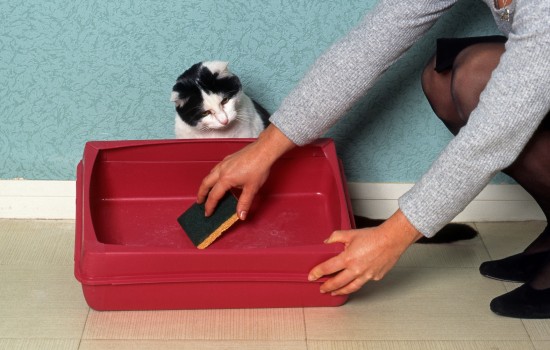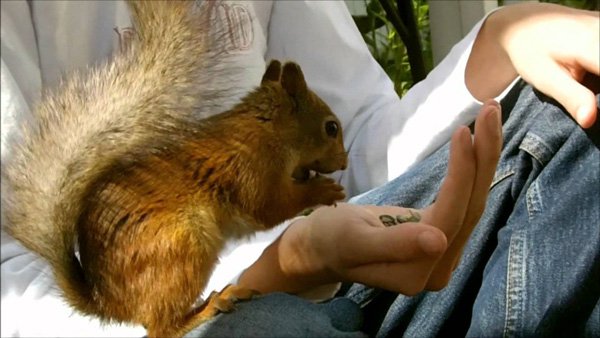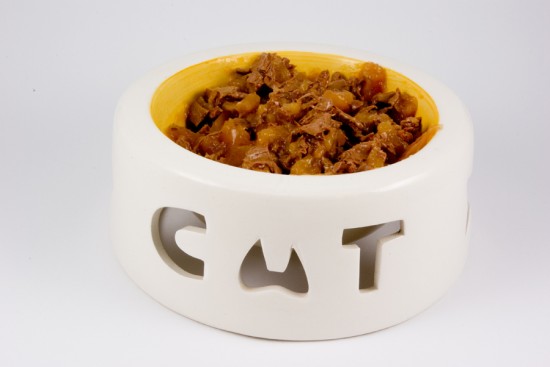
Your animal has just been diagnosed with kidney problems, and
you may be overwhelmed by just what that means and what needs to
be done to help him/her cope with the disease.
TERMINOLOGY
Kidney disease indicates some degree of kidney compromise; that
is, the kidneys are not working at 100% capacity. This may be
from an infection, from a toxin, from trauma, or from old age.
The damage that is done may or may not be reversible.
Kidney failure indicates that the kidneys are in a state of
deterioration; this may be mild, moderate or severe. While this
is usually a progressive disease, the rate at which the kidneys
fail varies greatly with the time at which the disease is
diagnosed, how aggressive the treatment is, and how well the
animal responds to treatment.
Either of the above can be acute; that is, the animal has normal
kidney function one day and then because of a toxin or
infection, the kidneys are suddenly compromised. Usually chronic
kidney failure is a slow, insidious progression of the kidney’s
inability to keep up with the body’s needs. The latter is more
common in cats and dogs.
SIGNS OF KIDNEY DISEASE OR FAILURE
Often animals live with poorly functioning kidneys for some time
before they show signs that are noticed by its owner. (NOTE: the
signs of increased water consumption and urine output may occur
with other diseases like hyperthyroidism and diabetes). Typical
signs of the disease:
Drinking a lot of water
This may be just staying at the water bowl longer to drink or
seeking new sources of water such as the toilet or a dripping
faucet.
Urinating a lot
Despite frequent cleanings, the litter box is always full, or a
previously housetrained pet has accidents in the house, or when
the dog goes out, it urinates larger volumes.
Decreased appetite
As toxins accumulate in the body, the appetite drops off so the
pet becomes more and more finicky.
Weight loss
This is the result of decreased appetite, but is often
inappropriately attributed to old age.
Dehydration
Even though the pet is drinking a lot, they urinate dilute urine
and become dehydrated.
Constipation
As the body needs more fluid, the colon becomes deprived of it.
The stool dries out and the pet becomes constipated.
Bad breath
Bad teeth can also contribute, but as toxins build up in the
body, they cause a bad odor from the mouth.
Oral/stomach ulcers
Acids build up in the stomach and irritate the inside lining;
this may cause vomiting and/or digested blood to appear in the
stool which then takes on a dark color.
DIAGNOSIS
Suspicion of kidney disease is based on the owner’s observation
and the veterinarian’s physical exam findings and tests that can
reveal the presence and severity of disease.
Bloodwork
An explanation of what these terms, along with the normal
values, is shown below. (These values are based the
interpretations of IDEXX, our outside laboratory. Linda Mar
Veterinary Hospital’s in-house values may be slightly different.)
BUN (Blood Urea Nitrogen): one of the kidney enzymes that is
increased with kidney problems. This value can also be elevated
with dehydration and recent ingestion of a high protein meal.
Normal values for dogs are 7-27. Normal values for cats are
17-35.
Creatinine: a more sensitive test of kidney function; commonly
increased with kidney problems. Normal values for dogs are
0.4-1.8. Normal values for cats are 0.8-2.3.
Hematocrit (Packed Cell Volume, or PCV): indicative of the
amount of red blood cells in the body. These cells are produced
by the bone marrow when it is stimulated by a hormone called
erythropoietin, made by the kidneys. When the kidneys fail, they
stop making this hormone. This results in anemia. Normal values
for dogs are 37-55%. Normal values for cats are 24-45%.
Albumin: one type of protein that, with some types of kidney
problems, can be lost in the urine (i.e. glomerular disease.)
Low blood levels of this is detrimental to the animal. Normal
values for dogs are 2.6-4.3. Normal values for cats are 2.4-4.1.
Cholesterol: a type of body fat commonly elevated in animals
with kidney problems. Unlike humans, it does not result in
hardening of the arteries. Normal values for dogs are 86-328.
Normal values for cats are 42-170.
Potassium: low blood levels, especially in cats with kidney
problems, are due to the potassium being lost in the urine.
Normal values for dogs are 4.0-5.6. Normal values for cats are
3.9-5.3.
Bicarbonate: this is lowered because poorly functioning kidneys
create an acidic state called metabolic acidosis. Normal values
for dogs are 17-24. Normal values for cats are 17-24.
Phosphorus: this component of the blood is normally eliminated
through the urine. Because of poorly functioning kidneys, blood
phosphorus levels can become increased and can cause problems
with the body’s calcium levels. This causes the animal to have a
poor appetite. Normal values for dogs are 2.1-6.3. Normal values
for cats are 3.3-7.5.
Urinalysis: Analyzing the urine can be helpful to check the
specific gravity (the animal’s ability to concentrate its
urine), the presence of protein (suggestive of glomerular
disease), and the presence of infection of the kidneys or the
bladder.
Blood Pressure: Animals with kidney failure will commonly have
elevated blood pressures. Systemic hypertension affects other
organs of the body such as the heart and eyes. With the latter,
sudden bleeding into the retina and retinal detachments can
occur, resulting in a sudden onset of blindness. Blood pressure
can be measured by use of a pressure cuff. If it is increased,
medication is started to bring down the blood pressure into a
more acceptable range.
TREATMENT
Fluid Replacement
Probably the most important component to treatment of kidney
failure, it is important to supplement your pet’s fluids even
though it appears that your animal is already drinking a lot
because the urine they produce is dilute, so they are constantly
in a dehydrated state. Additionally, poorly functioning kidneys
allow toxins to accumulate in the body. Additional fluids have a
flushing action to minimize the toxic levels.
Fluids can be given in 3 ways:
Orally: Making sure that fresh, clean water is always accessible
to your pet is paramount. Other types of fluids can also be
given, especially to cats that like clam juice, beef or chicken
broth, or the water found in canned tuna. Milk is not advised,
as it is not well tolerated. Additional water can be added to a
pet’s regular meal, either canned and/or dry.
Subcutaneously (under the skin, or SQ): fluids are administered
by placing a needle connected to an administration set (venoset)
to a bag of fluids (usually, a balanced isotonic solution such
as lactated ringers, but sometimes saline) and allowing the
fluids to slowly enter under the skin, forming a ‘hump’ that is
slowly absorbed by the pet. Fluids usually need to be given
every other day to every day.
This can be done in the hospital, or more conveniently at home,
especially for animals that need it on an on-going basis, which
is the case with pets with kidney failure. Owners can become
adept at this after hospital staff demonstrate the technique and
instruct the client.
Intravenously (in the vein, or IV): fluids are given directly
into the vein after placement of a catheter in the pet’s vein,
that is then taped in place This can be done only in the
hospital with careful monitoring by the staff. Administration of
IV fluids may be needed initially if the blood values are
elevated and your pet is sick (i.e. not eating; vomiting,
dehydrated) or in an animal that has been well maintained in
kidney failure and then suddenly decompensates.
Diet
When foods containing meat proteins are ingested, waste products
are produced. While this poses no problem for healthy kidneys,
ailing kidneys allow toxins to accumulate in the body. Because
of this, a low protein diet is often recommended to ease the
kidneys’ work. For dogs and cats, commercial diets that are low
in protein are Hill’s Canine K/D and Feline C/D and Purina CNM -
NF, respectively. Note – these are prescription foods and thus
are only available through your veterinarian.
Not as low in protein, but lower than maintenance foods, are any
senior formulation of a commercial brand food. Sometimes, an
easily digestible source of protein that produces minimal toxins
may be needed (i.e. cottage cheese or cooked egg), especially
when protein is being lost in the urine.
Medication – usually in the form of tablets to manage the
effects of kidney problems. These medications include:
Blood Pressure Medications: These include enalapril (Vasotec) or
amlodipine (Norvasc) or benazapril (Lotensin) to bring down
blood pressure. After starting on one of these, it is important
to measure the animal’s response to the medication to determine
if the dosage is adequate. These medications are ongoing.
Renagel: given to bind with the phosphorus that becomes
excessively high with the poorly functioning kidneys. This
medication may or may not be needed long term.
Antibiotics: these may occasionally be needed for treatment of
kidney problems, such as infection of the kidney
(pyelonephritis) or of the bladder (cystitis).
Calcitriol (Rocaltrol): this is a vitamin D analogue that helps
maintain normal calcium and phosphorus balances in the body. It
is often given in the food in small amounts daily. Correct
dosage is important as an overdose can be detrimental to your
pet. This drug is usually given on an ongoing basis.
Antacids: these act to decrease stomach acidity and decrease the
occurrence of ulcers, resulting in bloody vomitus or stool.
These over-the-counter drugs, such as cimetidine (Tagamet) or
famotidine (Pepcid AC), can be obtained at any drugstore.
Procrit (Epogen): this hormone, normally made by the kidneys, is
often lacking in patients with kidney problems. It is given as
an injection under the skin, usually by the owners at home after
an in-hospital demonstration. It is initially given 3 times a
week for 1-2 weeks, then tapered to 2 times a week for 1-2
weeks, then one time a week for maintenance.
The rate at which the frequency is tapered depends on the
animal’s response, as measured by weekly monitoring of the PCV
or packed cell volume. Once the PCV is at the desired level and
holding, the PCV should be measured on a regular basis.
It is a safe medication; however, occasionally an animal may
form antibodies against the Procrit. The antibodies destroy the
animal’s own red blood cells, thereby worsening the anemia. Or,
in some cases, animals may respond too well and make too many
red blood cells. Because of cost, this treatment is usually
recommended only for cats or small dogs. This medication can be
obtained from your veterinarian.
PROGNOSIS
The outcome of your pet’s health depends on a variety of
factors, such as what type of disease it has acquired, how
severe the disease is, at what stage medical intervention was
started, the aggressiveness of the treatment, and how well your
pet responds.
As with many diseases, the sooner the illness is detected and
steps initiated to reverse the damage or slow down its
progression, the better the prognosis. It is important to work
closely with your veterinarian to help your pet. Rechecks on a
regular basis are important to monitor your pet’s health. Its
weight, blood and urine values and blood pressure levels are
evaluated to determine the need for changes in therapy.
If you have any problems or questions regarding this disease,
don’t hesitate to ask your veterinarian.
The above is general veterinary information. Do not begin
any course of treatment without consulting your regular
veterinarian. All animals should be examined at least once every
12 months.
 Common Reasons Why A Cat Might Refuse To Use A Litter Tray
Common Reasons Why A Cat Might Refuse To Use A Litter Tray
 Egg Binding In Birds
Egg Binding In Birds
 Why Do Dogs Rub Their Faces On The Carpet Or Furniture?
Why Do Dogs Rub Their Faces On The Carpet Or Furniture?
 My Two Cats Skiibowski And Milky I Adopted And How They Differ From One Another Like Day And Night
My Two Cats Skiibowski And Milky I Adopted And How They Differ From One Another Like Day And Night
 5 Extraordinary Things Dogs Are Trained To Sniff Out
5 Extraordinary Things Dogs Are Trained To Sniff Out
 The Rottweiler And Hip Dysplasia
The Rottweiler And Hip Dysplasia
 Top 5 Features to Check before Buying the Dog Harnesses
Top 5 Features to Check before Buying the Dog Harnesses
Top 5 Features to Check before Buying the Dog Harnesses
Top 5 Features to Check before Buying the Dog Harnesses
 The Five Most Important Training Commands To Teach Your Dog
The Five Most Imp
The Five Most Important Training Commands To Teach Your Dog
The Five Most Imp
 Health Issues That Large And Giant Breed Dog Owners Should Be Aware Of
Health Issues Tha
Health Issues That Large And Giant Breed Dog Owners Should Be Aware Of
Health Issues Tha
 What You Need To Know About Ferret Health
What You Need To
What You Need To Know About Ferret Health
What You Need To
 Taking A Closer Look At The Way We Feed Our Cats
Taking A Closer L
Taking A Closer Look At The Way We Feed Our Cats
Taking A Closer L
Copyright © 2005-2016 Pet Information All Rights Reserved
Contact us: www162date@outlook.com